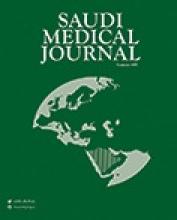To the Editor
We read with interest the study reported by Sharif et al.1 They concluded that “H63D polymorphism is associated with iron overload in BTM patients.”1 Indeed, there ae several factors that relates to the iron overload in BTM patients. There are also other underlying genetic factors that might superimpose the iron overload. The concurrent hemoglobin E disorder is a good example.2 In addition to genetic factors, the iron overload might be affected by basic thalassemia therapy including polytransfusion treatment and its accompanied chelation therapy.3 Those factors have be controlled and recognized before conclusion of the effect of the HFE polymorphisms. Nevertheless, if we focus on HFE polymorphism as a single factor regardless other possible confounding factors, the basic molecular change due to each HFE polymorphism can well explain the observation by Sharif et al.1 Based on the quantum molecular weight calculation as presented in the previous referencing publications,4,5 the molecular weight changes HFE H63D and C282Y are <22 and +60 g/Mol, respectively. The decreased molecular weight in H63D is contrast to increased molecular weight in C282 Y and it can be a clue for explanation the observed increased chance for iron overload in H63D.
Reply from the Author
Thanks for your interest in our article. In the methods section), we mentioned that the patients having any other hemoglobinopathy disorder (such as HbE) were excluded from the study. There are also other factors other that genetics such as polytransfusion treatment that cause iron overload. We mentioned this, in the introduction and in last paragraph of the discussion, and this factor is much difficult to be controlled in thalassemia major patients.
Molecular weight changes may increase chance for iron overload in H63D (as mentioned in correspondence) but, it is out of the scope of our study. We thank you for your valuable discussion/comments.
Yasir Sharif
Institute of Biochemistry & Biotechnology University of the Punjab Lahore, Pakistan
- Copyright: © Saudi Medical Journal
This is an open-access article distributed under the terms of the Creative Commons Attribution-Noncommercial-Share Alike 3.0 Unported, which permits unrestricted use, distribution, and reproduction in any medium, provided the original work is properly cited.






